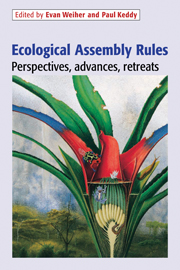The Swarthmore List
I'd like to keep this post as a running list of all the species I've observed on campus or in the Crum during my time at Swarthmore.
Updates:
05.05.2008 - added Spotted Sandpiper
03.18.2008 - added Cedar Waxing, off misses list
11.13.2007 - added Fox Sparrow, added Northern Goshawk to Possible ID List, removed Purple Finch and added to Misses list
10.25.2007 - added Purple Finch
10.16.2007 - added Red-winged Blackbird
09.24.2007 - added Nashville Warbler, off possible list, and Pine Warbler.
09.20.2007 - added Tree Swallow, off misses list
09.16.2007 - added Brown Thrasher, off misses list
11.19.2006 - added Yellow-bellied Sapsucker, off misses list
11.01.2006 - added Field Sparrow and Northern Harrier
10.28.2006 - added Winter Wren
10.27.2006 - added Eastern Phoebe, off misses list
10.26.2006 - added Gray-cheeked Thrush to possible ID list, off misses list
- Great Blue Heron
- Canada Goose
- Wood Duck
- Mallard
- Turkey Vulture
- Northern Harrier
- Sharp-shinned Hawk
- Broad-winged Hawk
- Red-tailed Hawk
- Killdeer
- Spotted Sandpiper
- Ring-billed Gull
- Rock Pigeon
- Mourning Dove
- Common Nighthawk
- Chimney Swift
- Ruby-throated Hummingbird
- Belted Kingfisher
- Red-bellied Woodpecker
- Yellow-bellied Sapsucker
- Downy Woodpecker
- Hairy Woodpecker
- Northern Flicker
- Pileated Woodpecker
- Eastern Wood-Pewee
- Acadian Flycatcher
- Least Flycatcher
- Eastern Phoebe
- Great Crested Flycatcher
- Eastern Kingbird
- Blue-headed Vireo
- Red-eyed Vireo
- Blue Jay
- American Crow
- Fish Crow
- Tree Swallow
- Northern Rough-winged Swallow
- Barn Swallow
- Carolina Chickadee
- Tufted Titmouse
- White-breasted Nuthatch
- Brown Creeper
- Carolina Wren
- House Wren
- Winter Wren
- Golden-crowned Kinglet
- Ruby-crowned Kinglet
- Blue-gray Gnatcatcher
- Eastern Bluebird
- Veery
- Gray-cheeked Thrush
- Swainson's Thrush
- Hermit Thrush
- Wood Thrush
- American Robin
- Gray Catbird
- Northern Mockingbird
- Brown Thrasher
- European Starling
- Cedar Waxwing
- Northern Parula
- Nashville Warbler
- Magnolia Warbler
- Black-throated Blue Warbler
- Yellow-rumped Warbler
- Black-throated Green Warbler
- Palm Warbler
- Pine Warbler
- Black-and-white Warbler
- American Redstart
- Ovenbird
- Northern Waterthrush
- Louisiana Waterthrush
- Common Yellowthroat
- Hooded Warbler
- Scarlet Tanager
- Eastern Towhee
- Field Sparrow
- Chipping Sparrow
- Fox Sparrow
- Song Sparrow
- Swamp Sparrow
- White-throated Sparrow
- Dark-eyed Junco
- Northern Cardinal
- Rose-breasted Grosbeak
- Red-winged Blackbird
- Common Grackle
- Brown-headed Cowbird
- Baltimore Oriole
- House Finch
- American Goldfinch
- House Sparrow
- Cooper's Hawk
- Northern Goshawk
- Red-shouldered Hawk
- Chestnut-sided Warbler
- Canada Warbler
- Great Horned Owl
- White-eyed Vireo
- Yellow Warbler
- Blue-winged Warbler?
- Blackburnian Warbler
- Blackpoll Warbler
- Indigo Bunting?
- Purple Finch
Labels: birds





0 Comments:
Post a Comment
<< Home